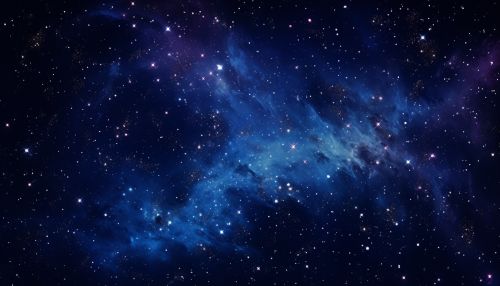Galaxy Cluster
Overview
A galaxy cluster is a structure that consists of anywhere from hundreds to thousands of galaxies that are bound together by gravity. These clusters are among the largest structures in the universe and serve as a key focus in the study of cosmology due to their significant role in the evolution of the universe.


Formation
Galaxy clusters are formed through a process known as hierarchical clustering. This process begins with smaller structures, such as galaxy groups, merging under the influence of gravity to form larger structures. This process is driven by the presence of dark matter, which makes up the majority of the mass in the universe and plays a crucial role in the formation of large-scale structures.
Composition
Galaxy clusters are made up of three main components: galaxies, hot gas, and dark matter. The galaxies within these clusters are primarily elliptical and spiral galaxies, although other types, such as dwarf galaxies, can also be found. The hot gas, which is primarily composed of hydrogen and helium, is heated to extreme temperatures by gravitational forces and emits X-rays. The dark matter, which cannot be directly observed, is inferred from its gravitational effects on visible matter.
Properties
One of the key properties of galaxy clusters is their mass. These structures are incredibly massive, with the total mass of a cluster typically being on the order of 10^14 to 10^15 solar masses. This mass is primarily made up of dark matter, with the galaxies and hot gas making up a smaller portion of the total mass.
Another important property of galaxy clusters is their size. These structures can be several million light-years across, making them some of the largest structures in the universe. The size of a galaxy cluster is typically measured by its virial radius, which is the radius within which the average density of the cluster is 200 times the critical density of the universe.
Observations and Studies
Galaxy clusters are observed in various ways. They can be detected in optical wavelengths by observing the galaxies within the cluster. They can also be detected in X-ray wavelengths by observing the hot gas within the cluster. Additionally, galaxy clusters can be detected through their gravitational effects on the Cosmic Microwave Background (CMB), a process known as the Sunyaev-Zel'dovich Effect.
Studies of galaxy clusters have provided valuable insights into various areas of cosmology. These include the study of dark matter, the evolution of galaxies, and the large-scale structure of the universe. Galaxy clusters also serve as powerful tools for studying the cosmological constant and the expansion of the universe.
